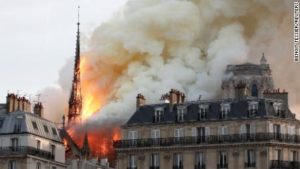 “Where are you from?”
“Where are you from?”
“Um, … everywhere? Nowhere? I’m not sure. Do you want a list?”
This awkward exchange marked the beginning of most every first conversation I had in high school and college. How exactly is a military kid to answer? “Well, I was born in Virginia, I lived for a year in South Carolina, I went to several elementary schools …” Before I’m even to fifth grade, most potential friends have walked away, rubbing the glazed look from their eyes.
Years later, this was still the lens through which I filtered the question my Bible study leader asked at church on Sunday.
“What do you think about place? Does God reside in certain spaces? How about thin places?”
“It’s more than a mere building … more than destruction of wood and glass. It is a cremation of place and of connection.”
“No,” I responded. “I don’t think God lives in specific locations. That seems too exclusive, as if the people who live in those zip codes are always in the presence and the rest of the world is out of luck. I think God is a God of welcome, not exclusion. So, I just don’t see God as being bound by a place.”
Little more than 24 hours later, the tears in my eyes and the ache in my soul seemed incongruent with the words I had so confidently shared with my class. As flames devoured much of the Notre Dame Cathedral in Paris, something more than a structure was being eaten away.
Having lived in the City of Lights for a year, I have been within the walls of Notre Dame on many occasions. Every time I walked beneath the gargoyles and entered the cavernous vault, it was the cool air that always caught my breath and was the first signal that I was in a special hollow. The ceilings were designed to draw the eye upward, and that they did magnificently. Reaching for the heavens, I felt so small as I quietly walked the perimeter of this grand building. Light filtered in through the kaleidoscope of stained glass, creating layers of light and shadow. I stood before the rows of candles, their tiny flames joining together to create a vision of prayer and hope.
The flames on the television screen on Monday had the opposite effect. Some 850 years of worship and pilgrimage, of ritual and blessing, collapsing into a heap of ash.
 It’s more than a mere building, isn’t it? The hundreds of Parisians somberly singing Ave Maria while watching their beloved Notre Dame melt into bits is evidence that, yes, this loss is more than destruction of wood and glass. It is a cremation of place and of connection.
It’s more than a mere building, isn’t it? The hundreds of Parisians somberly singing Ave Maria while watching their beloved Notre Dame melt into bits is evidence that, yes, this loss is more than destruction of wood and glass. It is a cremation of place and of connection.
I live in an old house in a historic neighborhood, and sometimes I clean the wood floors on my hands and knees. I don’t do this because it’s easy or quick. I do so because when my hands scrub those rows of wood and brush up against the nails embedded in them, it gives me pause to reflect on the many other women and men who have scrubbed these floors over the past 139 years. I think about the hopes that have been both birthed and buried within these walls and I feel connected to those who came before me, knowing that if they navigated their way through this messy, joyous, painful life, then the odds are good that I will too. My feet against the cool hardwood floors remind me of hope. I find God in this space and in this connection to my fellow travelers.
I felt similar emotions in the halls of the Notre Dame cathedral. No matter the day of the week or month of the year, a quick survey of my companion tourists illustrated the width and breadth Notre Dame reached. Across the centuries, millions of people of varying skin tone, culture, ethnicity, religion and gender found their way into the beauty of this place. I love knowing that my feet walked the same concrete as women, men and children from Africa, Asia, Australia, North America, South America, and Europe. Within its walls, we were one: struck by the beauty and the gift of this sacred space.
Witnessing that space of connection to God and to God’s people suffer and collapse caused my skin to feel hot. It’s easy to get lost in all that is gone. But within the structure that remains is the hope of the millions who have gone before us, reminding us that hope is stubborn and connection runs deep.
When you turn on the TV or look at your smartphone, don’t let your grief over this catastrophic destruction be for nothing.
It turns out my Bible study teacher was on to something. God is in a place: the place of deep connection between God’s self and God’s people. Sometimes this happens in the breathtaking beauty of a cathedral. Sometimes it simply involves grabbing a mop to kneel on wooden floors. But it always involves welcoming in the tourist, the visitor, the one unlike ourselves and finding that common ground of connection.
